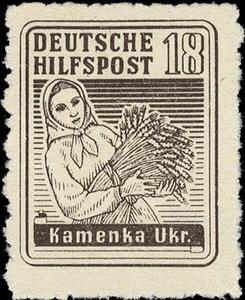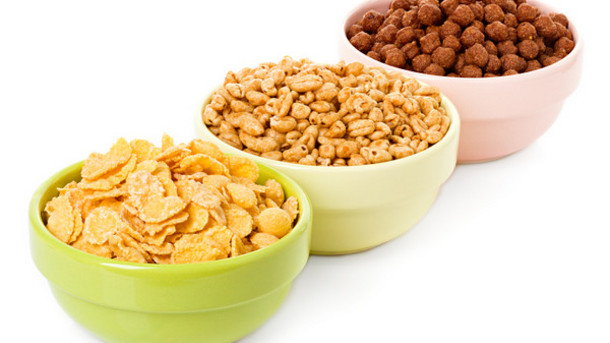Stamp: Peasant woman with a sheaf of grain : Kamenka (Ukraine, German Occupation In WWII 1944)
Peasant woman with a sheaf of grain : Kamenka (Ukraine, German Occupation In WWII 1944)
03 February (Ukraine, German Occupation In WWII ) within release Auxiliary post issues, South Ukraine goes into circulation Stamp Peasant woman with a sheaf of grain : Kamenka face value 18 German reichspfennig
| Stamp Peasant woman with a sheaf of grain : Kamenka in catalogues | |
|---|---|
| Michel: | Mi: DE-UA SU 5 |
Stamp is square format.
Rough perforatedAlso in the issue Auxiliary post issues, South Ukraine:
- Stamp - Peasant woman with a sheaf of grain : Bobrinez face value 18;
- Stamp - Peasant woman with a sheaf of grain : Bobrinez face value 18;
- Stamp - Peasant woman with a sheaf of grain : Cherson face value 18;
- Stamp - Peasant woman with a sheaf of grain : Dolinska face value 18;
- Stamp - Peasant woman with a sheaf of grain : Golowanewsk face value 18;
- Stamp - Peasant woman with a sheaf of grain : Kamenka face value 18;
- Stamp - Peasant woman with a sheaf of grain : Krivoy Rog face value 18;
- Stamp - Peasant woman with a sheaf of grain : Krivoy Rog face value 18;
- Stamp - Peasant woman with a sheaf of grain : Novo Migorod face value 18;
- Stamp - Peasant woman with a sheaf of grain : Novo Migorod face value 18;
Stamp Peasant woman with a sheaf of grain : Kamenka it reflects the thematic directions:
A cereal is a grass cultivated for its edible grain. Cereals are the world's largest crops, and are therefore staple foods. They include rice, wheat, rye, oats, barley, millet, and maize. Edible grains from other plant families, such as buckwheat and quinoa are pseudocereals. Most cereals are annuals, producing one crop from each planting, though rice is sometimes grown as a perennial. Winter varieties are hardy enough to be planted in the autumn, becoming dormant in the winter, and harvested in spring or early summer; spring varieties are planted in spring and harvested in late summer. The term cereal is derived from the name of the Roman goddess of grain crops and fertility of grain crops and fertility
Flora is the plant life occurring in a particular region or time, generally the naturally occurring or indigenous—native plant life. The corresponding term for animal life is fauna. Flora, fauna and other forms of life such as fungi are collectively referred to as biota. Sometimes bacteria and fungi are also referred to as flora, as in the terms gut flora or skin flora.
A woman is an adult female human. Before adulthood, a woman is referred to as a girl (a female child or adolescent)



